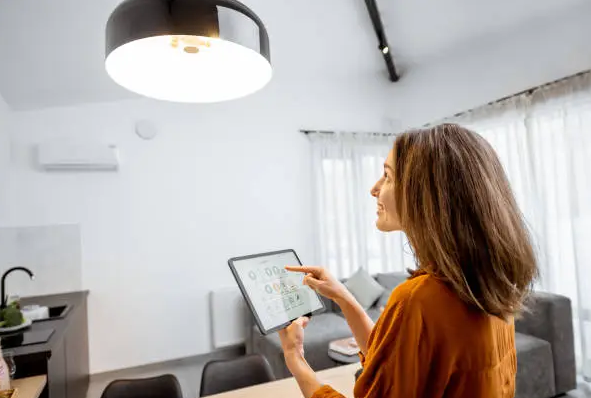 |
| Eco-friendly gardening, Sustainable gardening practices, Green gardening tips |
Saving Energy and Money with Smart Lighting: A How-To Guide
In an age where technology is rapidly advancing, it's no surprise that our homes are getting smarter. One area where this is especially evident is in the realm of smart lighting. Not only does smart lighting bring convenience and customization to our daily lives, but it also offers significant opportunities to save energy and money. In this how-to guide, we'll explore the benefits of smart lighting and provide you with practical tips on how to harness its potential to reduce your energy bills.
The Benefits of Smart Lighting
1. Energy Efficiency
Smart lighting systems are designed with energy efficiency in mind. Traditional incandescent bulbs waste a significant amount of energy as heat, while smart LED bulbs use a fraction of the energy to produce the same amount of light. Additionally, smart lighting systems allow you to schedule, dim, or turn off lights remotely, ensuring that you're not wasting energy when it's not needed.
2. Cost Savings
Reducing your energy consumption translates directly into cost savings. By optimizing your lighting usage with smart controls, you can see a noticeable decrease in your monthly energy bills. While the initial investment in smart lighting may seem high, the long-term savings make it a worthwhile investment.
3. Convenience and Customization
Smart lighting systems offer a level of convenience and customization that traditional lighting cannot match. You can control your lights with your smartphone, voice commands, or even automated schedules. This means you can adjust lighting to match your preferences, create ambiance, and set the mood for different activities without getting up from your chair.
How to Save Energy and Money with Smart Lighting
Now that we've highlighted the benefits of smart lighting, let's delve into the practical steps you can take to maximize energy savings and reduce your electricity bills.
1. Choose Energy-Efficient Bulbs
Start by selecting energy-efficient LED bulbs for your smart lighting system. Look for bulbs labeled with ENERGY STAR certification or other energy efficiency ratings. LEDs use significantly less energy and last much longer than traditional incandescent bulbs, making them a smart choice for your smart lighting setup.
2. Install Motion Sensors
Motion sensors can be a game-changer when it comes to saving energy. Install these sensors in areas where lights are frequently left on by accident, such as hallways, closets, and bathrooms. When motion is detected, the lights will automatically turn on, and they'll turn off after a set period of inactivity.
3. Implement Automated Schedules
Set up automated lighting schedules based on your daily routines. For example, you can program your lights to gradually brighten in the morning to help you wake up, then dim in the evening to prepare for bedtime. This way, you'll minimize unnecessary lighting and save energy during the day.
4. Use Smart Plugs
For lamps and other non-smart lighting fixtures, consider using smart plugs. These devices allow you to control the power supply remotely. You can turn off lights completely or set them on a schedule without the need for smart bulbs or fixtures.
5. Utilize Geofencing
Many smart lighting systems offer geofencing capabilities. This technology uses your smartphone's location to automatically adjust your lights when you leave or return home. Lights can be turned off when you leave the house and turned on as you approach, ensuring that you're not wasting energy when no one is home.
6. Voice Control and Smart Assistants
Leverage voice control through popular smart assistants like Amazon Alexa, Google Assistant, or Apple HomeKit. You can easily turn lights on or off with voice commands, set scenes, and control the brightness without lifting a finger.
7. Monitor Energy Usage
Many smart lighting systems come with energy monitoring features that allow you to track your electricity consumption. Use this data to identify areas where you can further optimize your lighting to save energy.
8. Regularly Update Firmware and Apps
Ensure your smart lighting system is up to date by regularly checking for firmware updates and app improvements. Manufacturers often release updates that can enhance energy-saving features and overall system performance.
Conclusion
Smart lighting isn't just a luxury; it's a practical and eco-friendly choice that can help you save both energy and money. By choosing energy-efficient bulbs, implementing automation and smart controls, and making use of advanced features like motion sensors and geofencing, you can create a lighting system that is not only convenient but also environmentally responsible. So, take the plunge into the world of smart lighting and watch your energy bills decrease while enjoying a more comfortable and customizable living space.
